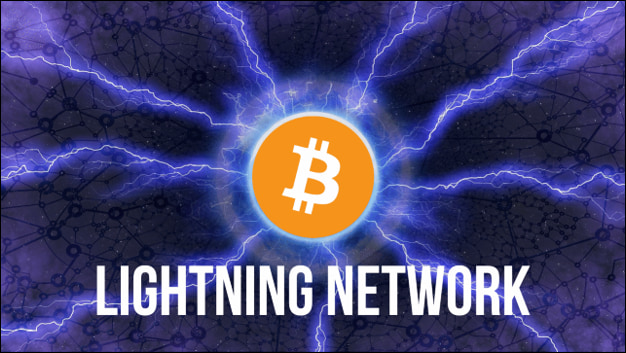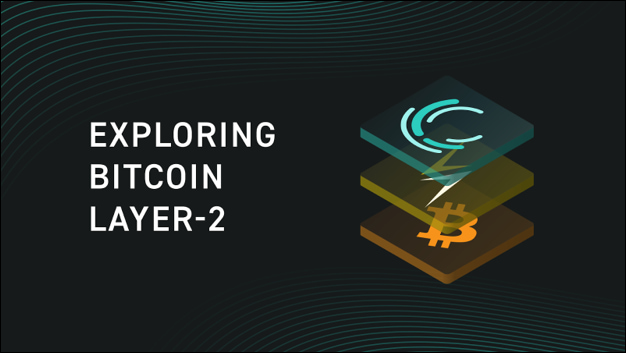
What is Bitcoin Layer 2?
Bitcoin Layer 2 refers to a secondary protocol or network built on top of the Bitcoin blockchain to address its scalability issues and enhance its functionality....

Bitcoin Layer 2 refers to a secondary protocol or network built on top of the Bitcoin blockchain to address its scalability issues and enhance its functionality....
The Bitcoin network was created in 2009 with a vision centred around security and decentralization while the technology itself enabled peer-to-peer transactions. At the time of its creation, Bitcoin was considered quite efficient and fast, especially when it came to international transactions.
Over time, however, the number of transactions the network could handle or its scalability has severely decreased. Such restrictions have led to exorbitant fees, longer waiting times, and decreased network performance, which could hinder the adoption of the Bitcoin network in the future.
What could be the solution to this problem?
The scalability issues with Bitcoin are addressed with Bitcoin layer 2 solutions. Built on top of the Bitcoin blockchain, they enable a greater number of transactions by adding to the Bitcoin network and providing extra capacity and processing power.
In this post, we will look at various Bitcoin Layer 2 projects, and see how the Bitcoin Layer 2 solutions are powering the future of decentralized and scalable transaction networks!
A secondary protocol set up on top of an active Bitcoin network is called a Bitcoin Layer 2 solution. They can run independently from the network by using the security and decentralization of the main blockchain while adding more functionality to accommodate a greater volume of transactions.
Off-chain processing components are frequently used in Bitcoin layer 2 protocols to address the performance and cost shortcomings of the Bitcoin layer 1 network. They enable more transactions by adding to the Bitcoin network and provide extra capacity and processing power.
Bitcoin layer 2 solutions address the constraints of the Bitcoin network. They are crucial for Bitcoin’s continuing development and popularity since they can increase scalability, lower transaction costs, and enhance privacy.
Let’s understand the working of a Bitcoin layer 2 project with a simple example.
Imagine a group of friends in a restaurant. Each person can go to the counter and order their own food, being charged by the restaurant separately. Or, to make the process quicker, one person can order the food for the entire table with a single big transaction with the restaurant.
By lowering the number of nodes or participants needed to validate transactions inside the layer 2 network, Bitcoin layer 2 solutions shorten the amount of time it takes to reach consensus.
Periodically, all confirmed transactions on layer 2 of a Bitcoin network are bundled together and sent back to layer 1, where they are verified as a single huge transaction and included in the following block on the layer 1 chain.
👉Want to get an in-depth understanding of blockchain layers? Read the detailed guide on What are Blockchain Layers?
1. Lightning Network
2. Liquid Network
3. Rootstock (RSK)
4. Drivechain
5. Statechains
6. Omni Layer
7. Stacks Protocol
The following is a list of the top Bitcoin layer 2 projects today:

Developed by Thaddeus Dryja and Joseph Poon, the Lightning Network is simply a second layer on top of the original Bitcoin blockchain and is a Bitcoin Layer 2 solution. This layer aims to reduce the amount of traffic passing via the primary Bitcoin blockchain.
On top of the blockchain, the Lightning Network is essentially a second-layer system. Although it works separately from the main chain, it eventually submits all transactions to it.
In the Lightning Network, Bitcoin users can create private payment channels for as many transactions as they like, called off-chain transactions.

One of the most popular Bitcoin layer 2 projects built on top of the Bitcoin blockchain is the sidechain protocol called The Liquid Network. Although Blockstream developed the Liquid Network, it is controlled by a federation of parties and runs on the Elements open-source blockchain platform.
L-BTC, or Liquid Bitcoin, is the term for Bitcoin on the Liquid Network. Users must lock up their Bitcoin in a transaction known as a peg-in to utilize Bitcoin on the Liquid Network. This is done by sending Bitcoin to an address created by the Liquid Network. After this deposit is validated, the user will get an identical amount of L-BTC and be able to conduct transactions on the Liquid Network.
Counted as one of the top Bitcoin Layer 2 projects, Rootstock Platform (RSK) was created by developers to overcome particular Bitcoin blockchain issues and was launched in 2014 to speed up Bitcoin transactions and offer smart contracts.
RSK is a platform that operates alongside the Bitcoin network; it is not a crypto protocol. When a bitcoin (BTC) is transmitted to RSK, it is converted into an RBTC, a Bitcoin with smart contracts support. At any point, the RBTC can be returned to the Bitcoin blockchain.
Using the Bitcoin blockchain, RSK enables developers of decentralized financial applications to establish their own DeFi protocols, NFTs, or other digital assets.
Drivechain is a Bitcoin layer 2 project that enables altcoins to operate on top of a Bitcoin network. This would have a number of advantages, including greater scalability, new features or use cases, the flexibility to experiment without permissions, and the eradication of blockchain rivalry. The drawback is that they need a soft fork to be utilized.
The foundation for a decentralized Bitcoin sidechain implementation known as “drivechains,” which made use of Hashrate Escrow and Blind Merge Mining, was proposed by Paul Sztorc’s two Bitcoin Improvement Proposals (BIPs) in 2017.
Drivechains would function as distinct blockchains (on their own sidechains) and could be merge-mined by Bitcoin miners in a manner identical to that of the RSK sidechain (known as Rootstock).
Statechains are a Bitcoin layer 2 protocol, allowing value to be transferred without straining the Bitcoin blockchain. This may facilitate scalability and save costs. Although not trustless, it retains a high level of censorship resistance since on-chain withdrawals are permissionless.
With Statechains, you essentially lock up money between the Statechain entity and the user in a 2-of-2 multisig. The user simply hands over their private key, which is referred to as the transitory key, to the intended receiver when they wish to transfer the money.
The Statechain entity and any users who possess the temporary key effectively control the money in Statechains.
The Omni Layer is a software layer that is added on top of the Bitcoin blockchain and improves upon the functionality of Bitcoin with its own unique features.
By offering smart contract capabilities, Omni Layer lets developers build new, customized cryptos, automate complicated financial processes, and decentralize and freely expand the Bitcoin network beyond its own currency.
The comparison of HTTP to TCP/IP is frequently used to explain the connection between Omni Layer and Bitcoin. In short, Omni Layer is the HTTP layer to the TCP/IP layer of Bitcoin.
Without the burden of creating a brand-new blockchain, Omni Layer uses its technology to improve the Bitcoin network by enabling tokenization and the execution of other smart contract capabilities.

Counted as one of the top-performing Bitcoin layer 2 projects, Stacks enhances the functionality of Bitcoin by utilizing self-executing smart contracts without requiring a Bitcoin fork.
This implies that without altering any of Bitcoin’s capabilities, Stacks may add new features to Bitcoin, like decentralized apps and smart contract functionality. Muneeb Ali and Ryan Shea, two Princeton graduates, co-founded Stacks, formerly known as Blockstack, in 2017. Blockstack changed its name to Stacks in 2020.
Once the business raised $50 million through a token sale, it grew fast. Its mainnet was built in 2018, and in 2019, Blockstack held its public sale, making it the first token sale ever under the jurisdiction of the US Securities and Exchange Commission (SEC).
The desire for quicker, affordable, and more user-friendly transactions will rise as more people utilize crypto. To meet these objectives, Bitcoin layer 2 solutions will continue to gain prominence. Regarding Bitcoin, its sidechains will probably keep playing a significant role in allowing the network’s continuing progress.
Because Bitcoin Layer 2 transactions take place off-chain, fewer computing resources are required to execute more transactions, drastically lowering transaction fees. By permitting off-chain transactions, they also make room on the main Bitcoin blockchain, allowing for the processing of more transactions and creating a more robust, less crowded network in general.
We hope this post helped you learn about various Bitcoin layer 2 projects and their significance!
A blockchain layer 2 network is a network that runs on top of the blockchain. This type of network allows for faster and cheaper transactions than traditional blockchain networks. Layer 2 networks have been around for quite some time, but they have gained popularity in recent years as more and more blockchains start facing scalability issues.
Layer 2 networks were created to manage thousands of small-value transactions and store them as summaries on the main chain as Bitcoin and Ethereum gained in popularity. Layer 2 chains also prevent Layer 1 chains from expanding and becoming overly dense.
Here are some of the well known layer 2 protocols:
State Channels: The Lightning Network is a state channel solution, which is why state channels are the most well-known Bitcoin layer 2 solution. They have been created especially to deal with micropayments and other kinds of transactions that demand a high level of efficiency and speed.
Rollup Chains: Using rollup chains, several off-chain transactions are combined into a single transaction that is subsequently added to the main chain.
Sidechains: There are many other use cases for sidechains, like creating DeFi apps and using smart contracts. Even additional layer 2 solutions, like rollups, may be built upon sidechains. Examples include Polygon and Rootstock.
Types of DDos Attack | Check Blockchain Wallet | Best P2P Crypto Exchanges | Defi Hacks | Physical Layer in OSI Model | What is a Crypto Exchange | Biggest NFT Marketplace | What is Nonce in Blockchain | Types of Distributed Ledger Technology | Fiat Money Advantages | What is Whales in Crypto | Ethereum Shanghai Upgrade | What is GameFi | What is AMM in Crypto | Cryptocurrency Career Opportunities | What is Consortium Blockchain | Major Components of Blockchain | What is a Flash Loan Attack | What is Defi 2.0 | Best NFT Discord Servers | NFT Vs Metaverse | Best Crypto Faucets | Difference Between Cryptocurrency and Blockchain | Crypto Mining Platforms | Advantages and Disadvantages of Blockchain Technology